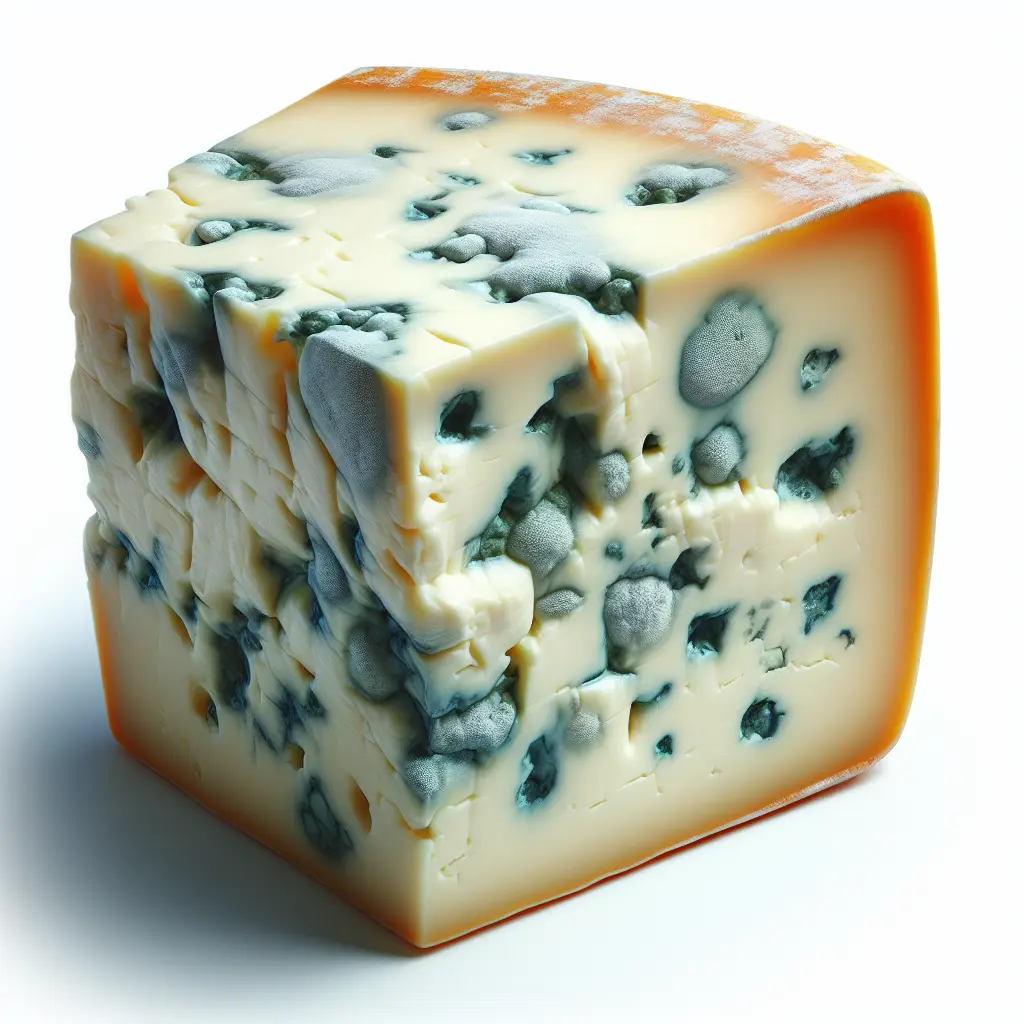Bleu Cheese: A Savory Delicacy with Rich Flavor and Texture
Bleu cheese is a type of cheese that has been introduced with a specific mold culture, Penicillium roqueforti or Penicillium glaucum. This mold gives the cheese its characteristic blue-green color and distinctive flavor.
Bleu cheese has a long history, dating back to the Middle Ages. It is believed to have originated in the Roquefort region of France, where it was made from sheep's milk. Today, bleu cheese is made from cow's milk and is produced in many countries around the world.
There are many different types of bleu cheese, each with its own unique flavor and texture. Some of the most popular types include:
- Roquefort: A classic French bleu cheese made from sheep's milk. It has a strong, pungent flavor and a crumbly texture.
- Gorgonzola: An Italian bleu cheese made from cow's milk. It has a milder flavor than Roquefort and a creamy texture.
- Stilton: An English bleu cheese made from cow's milk. It has a rich, buttery flavor and a slightly crumbly texture.
Bleu cheese is a versatile cheese that can be used in a variety of dishes. It can be crumbled on top of salads, added to sandwiches, or melted into sauces. It is also a popular ingredient in cheese platters.
Nutritional Value of Bleu Cheese
Bleu cheese is a good source of protein, calcium, and vitamins. One ounce of bleu cheese contains:
- Calories: 100
- Protein: 6.1 grams
- Fat: 8.1 grams
- Carbohydrates: 0.7 grams
- Fiber: 0 grams
- Sugar: 0.1 grams
Bleu cheese is also a good source of vitamins and minerals, including:
- Vitamin A
- Vitamin B2 (riboflavin)
- Vitamin B12
- Calcium
- Phosphorus
- Zinc
Health Benefits of Bleu Cheese
Bleu cheese has been shown to have a number of health benefits, including:
- Improved digestion: The probiotics in bleu cheese can help to improve digestion and reduce the risk of gastrointestinal problems.
- Reduced inflammation: The anti-inflammatory properties of bleu cheese can help to reduce inflammation throughout the body.
- Boosted immunity: The vitamins and minerals in bleu cheese can help to boost the immune system and protect against infection.
- Improved bone health: The calcium in bleu cheese can help to improve bone health and reduce the risk of osteoporosis.
How to Enjoy Bleu Cheese
Bleu cheese can be enjoyed in a variety of ways. Here are a few ideas:
- Crumble it on top of salads.
- Add it to sandwiches or burgers.
- Melt it into sauces or dips.
- Serve it on a cheese platter with other cheeses, crackers, and fruit.
Bleu cheese is a versatile and delicious cheese that can be enjoyed in many different ways. Its unique flavor and texture make it a popular ingredient in a variety of dishes.
How many calories are in Bleu Cheese?
Each 1 oz of Bleu Cheese contains 100 calories.
Bleu Cheese Nutritional Information
| Nutrient | Amount per 1 oz (28g) |
|---|---|
| Calories | 100 Calories |
| Protein | 6.1g |
| Fat | 8.1g |
| Saturated Fat | 5.3g |
| Cholesterol | 0.021mg |
| Carbohydrates | 0.7g |
| Dietary Fiber | 0g |
| Sugar | 0.1g |
| Sodium | 0.325mg |
| Potassium | 0.0726mg |
| Calcium | 0.15mg |
| Iron | 0.0001mg |
